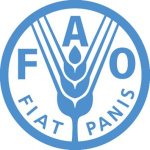- Industry: Agriculture
- Number of terms: 87409
- Number of blossaries: 0
- Company Profile:
Established in October 1945 with the objective of eliminating hunger and improving nutrition and standards of living by increasing agricultural productivity, FAO coordinates the efforts of governments and technical agencies in programs for developing agriculture, forestry, fisheries, and land and ...
Cells that are taken from an individual, cultured (or stored), and, possibly, genetically manipulated before being infused back into the original donor.
Industry:Biotechnology
Cells that, after introduction into a recipient, will not induce an immune response that leads to their rejection.
Industry:Biotechnology
Cells with variable (euploid, aneuploid) chromosome numbers. Mosaics or chimeras differ in chromosome number as a result of a variety of mitotic irregularities.
Industry:Biotechnology
Change in allele frequency from one generation to another within a population, due to the sampling of finite numbers of genes that is inevitable in all real (finite) populations. The smaller the population, the greater is the genetic drift. Sooner or later (depending on the size of the population), genetic drift results in loss of alleles from a population, and hence leads to a loss of genetic variation. Because of this, the minimization of genetic drift is an important consideration for conservation of genetic resources.
Industry:Biotechnology
Change(s) in the genetic constitution of a cell through alterations to its DNA.
Industry:Biotechnology
Changes in the base sequence of a DNA molecule resulting from the random integration of DNA from another source.
Industry:Biotechnology
Changes in the genetic constitution of cells (apart from selective breeding) resulting from the introduction or elimination of specific genes through modern molecular biology techniques. This technology is based on the use of a vector for transferring useful genetic information from a donor organism into a cell or organism that does not possess it.
A broader definition of genetic engineering also includes selective breeding and other means of artificial selection.
Industry:Biotechnology
Charcoal which has been treated to remove hydrocarbons and to increase its adsorptive properties. It acts by condensing and holding a gas or solute onto its surface; thus inhibitory substances in nutrient medium may be adsorbed to charcoal included in the medium. Rooting factors such as phenolamines present as contaminants in charcoal may stimulate growth <i>in vitro</i>. Its addition to rooting medium may stimulate root initiation in some plant species. Activated charcoal may differ in origin and in composition.
Industry:Biotechnology
Charcoal which has been treated to remove hydrocarbons and to increase its adsorptive properties. It acts by condensing and holding a gas or solute onto its surface; thus inhibitory substances in nutrient medium may be adsorbed to charcoal included in the medium. Rooting factors such as phenolamines present as contaminants in charcoal may stimulate growth <i>in vitro</i>. Its addition to rooting medium may stimulate root initiation in some plant species. Activated charcoal may differ in origin and in composition.
Industry:Biotechnology
